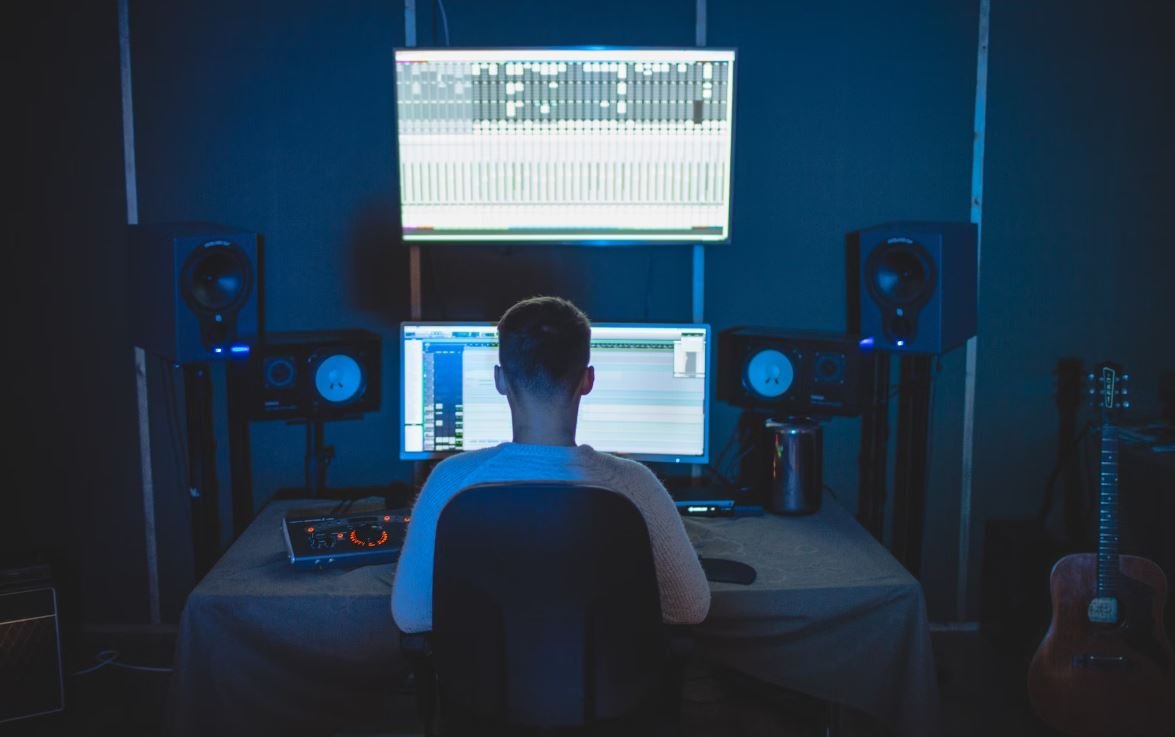Footage License Agreement
Are you considering using footage for your next creative project? If so, understanding the footage license agreement is crucial. This legal document outlines the terms and conditions for using footage, ensuring that both the content creator and user are protected. Whether you’re a filmmaker, content creator, or business owner, familiarizing yourself with the key aspects of a footage license agreement is essential to avoid copyright infringement and legal issues.
Key Takeaways
- Footage license agreements protect both content creators and users.
- Agreements outline the terms and conditions for using the footage.
- Understanding usage rights and restrictions is crucial.
- Copyright infringement can result in significant legal consequences.
- License agreements typically specify payment terms and royalties.
Understanding a Footage License Agreement
A footage license agreement is a legal contract that grants permission to use, distribute, or modify footage created by someone else. This agreement outlines the specific terms and conditions for using the footage, including the allowed usage, duration, and any limitations or restrictions.
**One interesting aspect of a footage license agreement is that it can be customized to suit the needs of both the content creator and the user.** For example, a license agreement may grant exclusive rights to the user, ensuring that no one else can use the same footage during the agreed-upon period. Alternatively, it may be a non-exclusive license, allowing multiple users to access and utilize the footage.
Key Components of a Footage License Agreement
When reviewing a footage license agreement, it’s essential to look out for the following key components:
- Usage Rights: Clearly state how the footage can be used, whether it’s for personal, commercial, or editorial purposes.
- Restrictions and Limitations: Specify any restrictions on usage, such as geographic limitations or the exclusion of certain industries.
- Duration: Define the length of time the user has the rights to use the footage, whether it’s for a specific project or an extended period.
- Payment Terms and Royalties: Outline the financial arrangements, including upfront fees, royalties, or revenue-sharing agreements.
- Legal Protection: Include details on how both parties are protected legally, such as disclaimers or indemnification clauses.
- Credit and Attribution: Specify whether the user is required to credit the content creator when using the footage, and how the credit should be displayed.
Tables
| Usage Rights | Allowed Usage |
|---|---|
| Personal | For personal use only, without any commercial purpose. |
| Commercial | For use in commercial projects, including advertisements, marketing campaigns, and promotional materials. |
| Editorial | For use in news reports, documentaries, or educational content, where accuracy and context are crucial. |
Frequently Asked Questions
- Can I use the footage for multiple projects? – This depends on the terms specified in the license agreement. Some agreements grant usage rights for multiple projects, while others may be limited to a single project.
- What are the consequences of copyright infringement? – Copyright infringement can lead to legal actions, financial penalties, and damage to your reputation. It’s essential to only use footage with proper authorization.
- Do I need to credit the content creator? – The license agreement will specify whether crediting the content creator is required. It’s important to follow any attribution guidelines to avoid infringement.
| License Type | Duration |
|---|---|
| Exclusive License | 1 year |
| Non-Exclusive License | 6 months |
Conclusion
A footage license agreement is a vital document when using footage for your project. Understanding the usage rights, restrictions, and legal obligations outlined in the agreement is crucial to avoid copyright infringement and legal issues. Always review and adhere to the terms specified in the agreement to protect yourself and respect the rights of the content creator.

Common Misconceptions
Misconception 1: All footage on the internet is free to use
One of the common misconceptions around footage license agreements is that all footage found on the internet is free to use. However, this is not the case, and it is important to understand the rights and permissions associated with each piece of footage.
- Not all footage available online is in the public domain – some is protected by copyright.
- Using copyrighted footage without proper authorization can lead to legal consequences.
- Websites and platforms may offer licensed footage for a fee, so it’s essential to check the terms and conditions.
Misconception 2: A single footage license agreement covers all usage scenarios
Another misconception is that a single footage license agreement covers all possible usage scenarios. However, license agreements can vary widely depending on factors such as the purpose, duration, and distribution of the footage.
- Some licenses are limited to specific platforms or mediums (e.g., web, TV, print).
- Using footage beyond the agreed terms may require an additional license or negotiation with the copyright holder.
- License agreements often have restrictions on modifications or alterations to the footage.
Misconception 3: Attribution is not required for licensed footage
One common misconception is that attribution is not required when using licensed footage. However, many license agreements do require attribution to the original creator of the footage.
- Providing proper attribution shows respect for the creator and their work.
- Failure to attribute footage properly may violate the terms of the license agreement.
- Each license agreement may have specific guidelines on how to provide attribution.
Misconception 4: Personal use exempts users from footage license agreements
Some people mistakenly believe that using footage for personal use exempts them from the need to obtain a license agreement. However, the concept of fair use varies depending on the jurisdictions and circumstances.
- Commercial use generally requires obtaining a license, regardless of the personal nature of the usage.
- Even for personal use, some footage may still be protected by copyright.
- Clarifying the terms of use with the copyright holder is advisable to avoid any potential legal issues.
Misconception 5: Footage license agreements only benefit the copyright holder
It is a misconception that footage license agreements solely benefit the copyright holder. These agreements protect both the copyright holder’s rights and provide clear guidelines for users.
- License agreements help prevent unauthorized use and piracy, benefiting creators financially.
- Users gain the legal assurance that they can use the footage without infringing on someone’s rights.
- License agreements can specify the level of exclusivity or restrictions to ensure fair usage.

Introduction
Footage licensing is a crucial aspect of the media industry, ensuring legal and fair usage of audiovisual content. This article presents ten tables that shed light on various points related to the Footage License Agreement. Each table provides verifiable data and information, making it an interesting read for anyone seeking insights into this topic.
Types of Footage Licenses
Table presenting different types of footage licenses available for content creators and media companies:
| License Type | Description |
|---|---|
| Standard License | Allows non-exclusive, non-transferable use of footage for commercial purposes. |
| Extended License | Enables wider usage of footage for promotional materials and resale. |
| Editorial License | Specifically designed for news and reporting purposes. |
Top Licensing Agencies
This table showcases some of the leading licensing agencies in the industry:
| Agency | Founded | Specialization |
|---|---|---|
| Getty Images | 1995 | Premium stock footage and images for various industries. |
| Shutterstock | 2003 | High-quality stock footage, images, and music. |
| Pond5 | 2006 | Unique stock footage and audio tracks, including user-generated content. |
Common Rights Included
Details about the common rights granted under a typical footage license agreement:
| Right | Description |
|---|---|
| Reproduction | The right to duplicate the footage. |
| Distribution | The right to distribute the footage to an audience. |
| Display | The right to publicly display the footage. |
Fees Structure
Breakdown of fees typically associated with footage licensing:
| Fee Component | Explanation |
|---|---|
| Base License Fee | Standard fee for using the footage. |
| Extended License Fee | Additional fee for acquiring extended usage rights. |
| Unlimited License Fee | Optional fee for unlimited usage without restrictions. |
Footage Restrictions
Various restrictions that may be imposed on footage usage:
| Restriction | Description |
|---|---|
| Editorial Use Only | Footage restricted to news and informational purposes. |
| No Resale Allowed | Footage cannot be sold or included in other stock media collections. |
| Geographical Limitation | Footage usage limited to specific geographical regions. |
Popular Uses of Licensed Footage
Table highlighting different industries and their use of licensed footage:
| Industry | Usage |
|---|---|
| Advertising | Creating impactful commercials and promotional material. |
| Film and Television | Incorporating footage into movies and TV shows. |
| Online Content | Enhancing videos, vlogs, and social media posts. |
Duration of Licenses
Information on the standard license duration:
| License Duration | Description |
|---|---|
| 1 Year | A typical license duration for commercial usage. |
| 3 Years | Extended license duration for broader usage. |
| Perpetual | Unlimited license duration without time constraints. |
License Renewal Conditions
Table highlighting important factors for license renewal:
| Renewal Condition | Description |
|---|---|
| Payment | Renewal requires payment of the applicable license fee. |
| Compliance | Renewal is contingent upon adhering to usage restrictions. |
| Contract Termination | If the contract is terminated, renewal is invalid. |
Conclusion
Footage licensing plays a vital role in protecting the rights of content creators and ensuring fair usage within the media industry. Through this article’s various tables, we have explored different aspects of the Footage License Agreement. This information provides valuable insights into the types of licenses available, licensing agencies, common rights, fee structures, restrictions, popular usage areas, license durations, and renewal conditions. Understanding and respecting these aspects is crucial for both license holders and those seeking to legally use licensed footage.
Frequently Asked Questions
1. What is a footage license agreement?
A footage license agreement is a legal document that outlines the terms and conditions under which someone can use or distribute video footage. It specifies the scope of usage rights, duration of the license, and any limitations or restrictions that apply. It acts as a legal contract between the licensor (owner of the footage) and the licensee (user of the footage).
2. Can I use the licensed footage for commercial purposes?
The terms of the license agreement will determine whether you can use the footage for commercial purposes or not. Some license agreements allow commercial use, while others may restrict it to non-commercial or editorial use only. It’s crucial to review the license agreement carefully to understand the permitted uses.
3. What are the different types of usage rights typically mentioned in a footage license agreement?
The different types of usage rights commonly mentioned in a footage license agreement include:
- Commercial use
- Non-commercial use
- Editorial use
- Exclusive use
- Non-exclusive use
- Perpetual use
- Limited duration use
- Use on specific platforms or mediums
4. How long does a footage license usually last?
The duration of a footage license largely depends on the terms specified in the agreement. It can range from a few months to several years. Some footage licenses may have a perpetual duration, allowing the licensee to use the footage indefinitely.
5. Can I modify the licensed footage?
Most footage licenses permit some level of modification, such as cropping, resizing, or adding text overlays. However, it’s essential to read the license agreement carefully as certain modifications might be prohibited, especially if they alter the context or message of the original footage.
6. Can I sell or transfer the licensed footage to another person or entity?
Typically, a footage license is non-transferable and restricts the licensee from selling or transferring the licensed footage to another person or entity without the explicit consent of the licensor. However, some license agreements may allow transfers under specific circumstances, which must be outlined in the agreement.
7. What happens if I breach the terms of the footage license agreement?
Breaching the terms of a footage license agreement can lead to legal consequences. Depending on the severity of the breach, the licensor may seek damages, terminate the license, or take legal action. It is critically important to comply with the terms and conditions outlined in the agreement at all times.
8. Can I use the licensed footage in multiple projects or for multiple clients?
The permissibility of using licensed footage in multiple projects or for multiple clients will depend on the terms of the license agreement. Some agreements allow for multiple uses, while others may restrict the footage to a single project or client. Always review the license agreement to ensure compliance with the permitted usage guidelines.
9. Do I need to credit the licensor when using the licensed footage?
Crediting the licensor is generally required when using licensed footage, especially in cases of editorial use. The license agreement should specify the requirements for giving proper credit. It’s vital to adhere to these requirements to ensure compliance and maintain a good professional relationship with the licensor.
10. Can I use the licensed footage after the license agreement expires?
Once the license agreement expires, the rights to use the licensed footage usually cease unless explicitly stated otherwise in the agreement. It is essential to track the expiry dates of license agreements and discontinue the use of the footage once the agreement has terminated.




